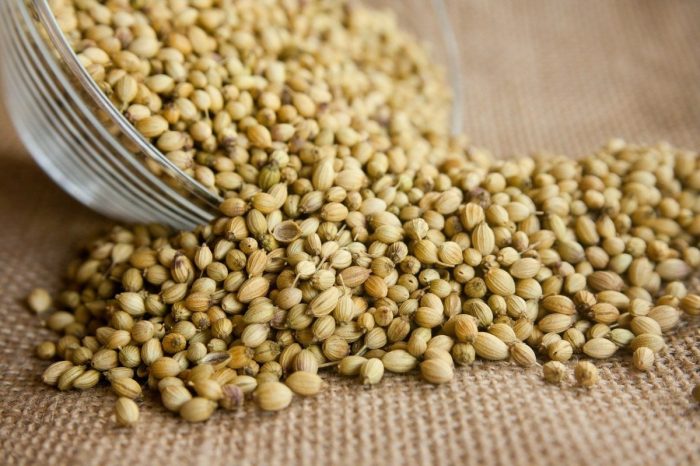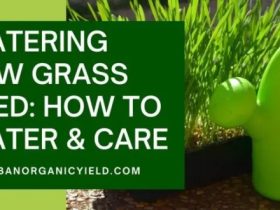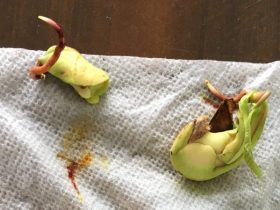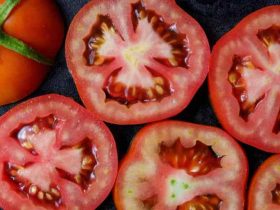Planting Coriander: A Comprehensive Guide: Can You Plant Coriander Seeds

Source: recipes.net
Can you plant coriander seeds – Coriander, with its vibrant leaves and aromatic seeds, is a popular herb used in various cuisines worldwide. Whether you’re a seasoned gardener or a novice, successfully cultivating coriander requires understanding its specific needs. This guide details the methods for planting coriander seeds, from direct sowing to indoor cultivation, along with essential care tips to ensure a bountiful harvest.
Direct Planting of Coriander Seeds
Direct sowing coriander seeds is a straightforward method, ideal for those with ample garden space. Success hinges on selecting the right time and preparing the soil appropriately.
Ideal soil conditions for direct sowing include well-drained, loose soil rich in organic matter. A slightly acidic to neutral pH (6.0-7.0) is optimal. Heavy clay soils should be amended with compost or other organic materials to improve drainage and aeration.
Sowing coriander seeds directly involves creating shallow furrows about 1/4 inch deep. Space the seeds approximately 1-2 inches apart, and then cover them lightly with soil. Gently water the area to ensure good seed-soil contact.
The optimal time for direct sowing varies depending on the climate. Generally, it’s best to plant coriander in cool weather, as it bolts (goes to seed) quickly in hot temperatures. The table below provides a guideline based on climate zones.
| Climate Zone | Planting Time (Month) | Soil Temperature (°C) | Sunlight Requirements |
|---|---|---|---|
| USDA 5-7 | March-May, September-October | 15-20 | 6-8 hours of sunlight |
| USDA 8-10 | October-November, March-April | 18-24 | 6-8 hours of sunlight |
| USDA 11-13 | Year-round (avoid hottest months) | 20-25 | 6-8 hours of sunlight, some shade in hottest parts of the day |
Preparing the soil before direct sowing involves clearing the area of weeds, rocks, and debris. Loosen the soil to a depth of about 6-8 inches using a garden fork or tiller. Incorporate compost or other organic matter to improve soil fertility and drainage. Level the soil surface before sowing the seeds.
Starting Coriander Seeds Indoors
Starting coriander seeds indoors offers advantages such as earlier harvests and protection from unpredictable weather conditions. However, it requires careful attention to detail.
Advantages include an earlier harvest and better control over environmental factors. Disadvantages include the need for extra space and potential difficulties in transplanting seedlings.
Select small containers (seed trays or individual pots) with drainage holes. Use a well-draining seed-starting mix, not garden soil. Sow seeds about 1/4 inch deep, spacing them appropriately. Water gently from below or use a fine mist spray to avoid disturbing the seeds.
The ideal indoor growing environment for coriander seedlings includes:
- Temperature: 65-75°F (18-24°C)
- Light: 6-8 hours of sunlight or supplemental grow lights
- Humidity: Moderate to high humidity
Coriander Seed Germination and Growth
Several factors influence coriander seed germination and subsequent growth. Understanding these factors is crucial for successful cultivation.
Temperature, moisture, and light are key factors affecting coriander seed germination. Optimal temperatures range from 65-75°F (18-24°C). Consistent moisture is essential, but avoid overwatering, which can lead to rotting. While seeds don’t require light to germinate, adequate light is necessary for seedling development.
Common germination problems include slow or no germination (due to low temperatures or insufficient moisture) and damping-off (a fungal disease). Solutions include using fresh seeds, ensuring proper soil moisture, and using a fungicide if necessary.
Coriander plants grown from seeds generally exhibit faster growth compared to those propagated from cuttings (which are not commonly used for coriander). Healthy coriander seedlings show vigorous growth, deep green color, and erect stems.
Caring for Coriander Plants, Can you plant coriander seeds
Consistent care throughout the coriander plant’s life cycle is essential for optimal growth and yield.
| Growth Stage | Watering Needs | Fertilizing Requirements | Pest/Disease Management |
|---|---|---|---|
| Seedling | Keep soil consistently moist | Not required initially | Monitor for damping-off |
| Vegetative | Water regularly, especially during dry periods | Balanced liquid fertilizer every 2-3 weeks | Check for aphids and other common pests |
| Flowering/Seed Production | Maintain consistent soil moisture | Reduce fertilization | Continue pest monitoring |
Regular watering is crucial, ensuring the soil remains consistently moist but not waterlogged. Overwatering can lead to root rot, while underwatering can stunt growth. Coriander thrives in full sun (6-8 hours daily), but in hot climates, some afternoon shade may be beneficial to prevent bolting.
Harvest coriander leaves when they are young and tender for the best flavor. For seeds, allow the plants to flower and the seed heads to dry completely before harvesting.
Yes, you can definitely plant coriander seeds! The success of your coriander crop, however, depends on timing, much like the optimal time for planting flowers, as detailed in this helpful guide on when to start planting flower seeds. Understanding seasonal factors is key for both coriander and flowers, ensuring the best germination and growth. So, while you can plant coriander seeds, knowing the right time will maximize your yield.
Illustrative Examples

Source: spiceandlife.com
A visual representation of coriander growth would show a small seed germinating into a seedling with two cotyledons. The seedling then develops true leaves, gradually increasing in size and branching out. As the plant matures, it produces flower stalks with small white flowers. These flowers then develop into seed heads containing the coriander seeds.
Healthy coriander leaves are bright green, delicate, and have a slightly serrated edge. The seeds are small, round, and light brown, with a slightly bumpy texture. Leggy growth, yellowing leaves, and bolting (premature flowering) are common problems. Leggy growth often results from insufficient light, while yellowing leaves may indicate nutrient deficiencies or overwatering. Bolting is usually triggered by hot temperatures.
Helpful Answers
Can I save coriander seeds from my plants to plant next year?
Yes, you can! Allow some coriander flower heads to fully dry on the plant before collecting the seeds. Store them in a cool, dry place in an airtight container.
How long does it take for coriander seeds to germinate?
Germination typically takes 7-14 days, depending on temperature and soil conditions. Warmer temperatures generally result in faster germination.
What should I do if my coriander plants are bolting?
Bolting (going to seed prematurely) often occurs due to heat stress. Provide shade during the hottest part of the day and ensure consistent watering.
My coriander leaves are yellowing. What’s wrong?
Yellowing leaves can indicate nutrient deficiencies, overwatering, or pest infestations. Check your watering practices and consider a balanced fertilizer.



